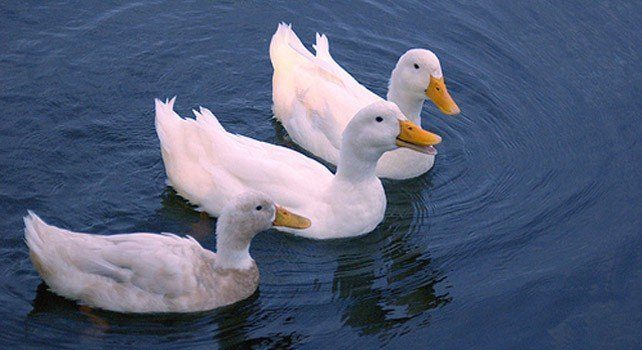
Image source: https://www.thefactsite.com/wp-content/uploads/2012/12/facts-about-ducks.jpg
There are 112 Wild duck species. Species like the bronze-winged duck live primarily in South America, they are also known as the Brazilian duck. The red shoveler duck is also from South America. Ducks breed all over the world. So naturally, the breeds that multiply in one region will eat whats available in that area of the world.
Ducks are omnivorous (eat both animals, plants, and anything edible). An example of what they'll eat is revealed in the American Black duck. This domestic duck breeds in the Atlantic Provinces of Canada and the northeastern states of the USA. Its diet consists of plants 80% of the time and plants for the balance. The animals they consume include small fish, mussels, insects, snails, amphipods and mollusks. They also eat wetland grasses, root stalks, leaves, stems, sedges, and seeds. Ducks graze when theyre on land and when they are in the shallow water they dabble for food eating fish and aquatic plants: smartweed, pondweed, and eelgrass. Ducks breed and when they're young, just days old, they eat invertebrates like mayflies, grub worms, dragonflies, beetles, and larvae.
The mallard is an invasive breed that is also domestic to the USA. It has been known to mate with other species contributing to many mixed breeds. It also can be found in many parts of the globe. This breed is on every continent on earth. Romanian mallards have been seen hunting smaller birds, grey wagtails, and black redstarts. Other mallards have been known to eat frogs. Their diet also consists of 40% animal and 60% plant. Females consume about ten percent more animal food when they're laying eggs.
The red-crested pochard found primarily in the large area spanning from the British Isles across Europe to China. They eat the usual omnivorous diet including grains such as rice. Their animal diet expands to include crab.
The duck diet changes as the seasons change and as mating or migrating occurs. When the females are carrying their young, they eat more animal food. In the winter when the duck often migrates the diet will change as the regional food supply alters. Their diet also varies based on the duck's competition for food. The duck also has to be wary of becoming the food for other animals. Their predators are varied ranging from birds of prey like eagles, owls, and harriers to ground and water animals like bullfrogs and snapping turtles that eat ducklings.
Ducks that survive into adulthood do have a wide variety of edible foods from which to choose. Adult ducks from every species eat animals, plants, and grains. They graze on land and they feed in shallow waters. The ducks' diet is influenced by the competition eating the same foods, mating and migrating. Despite the fact that they have to hunt for every morsel of food, most duck species that survive to adulthood have a lifespan between 20 and 27 years in the wild.
